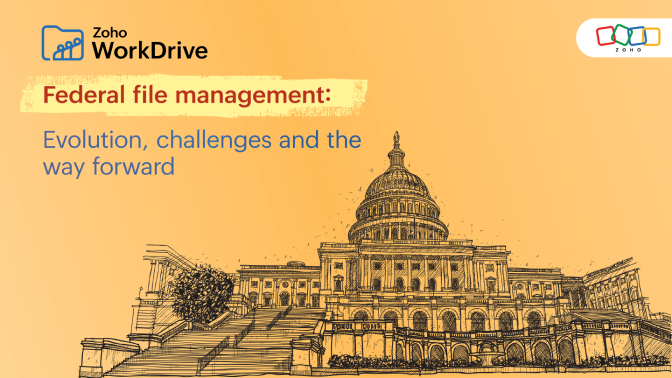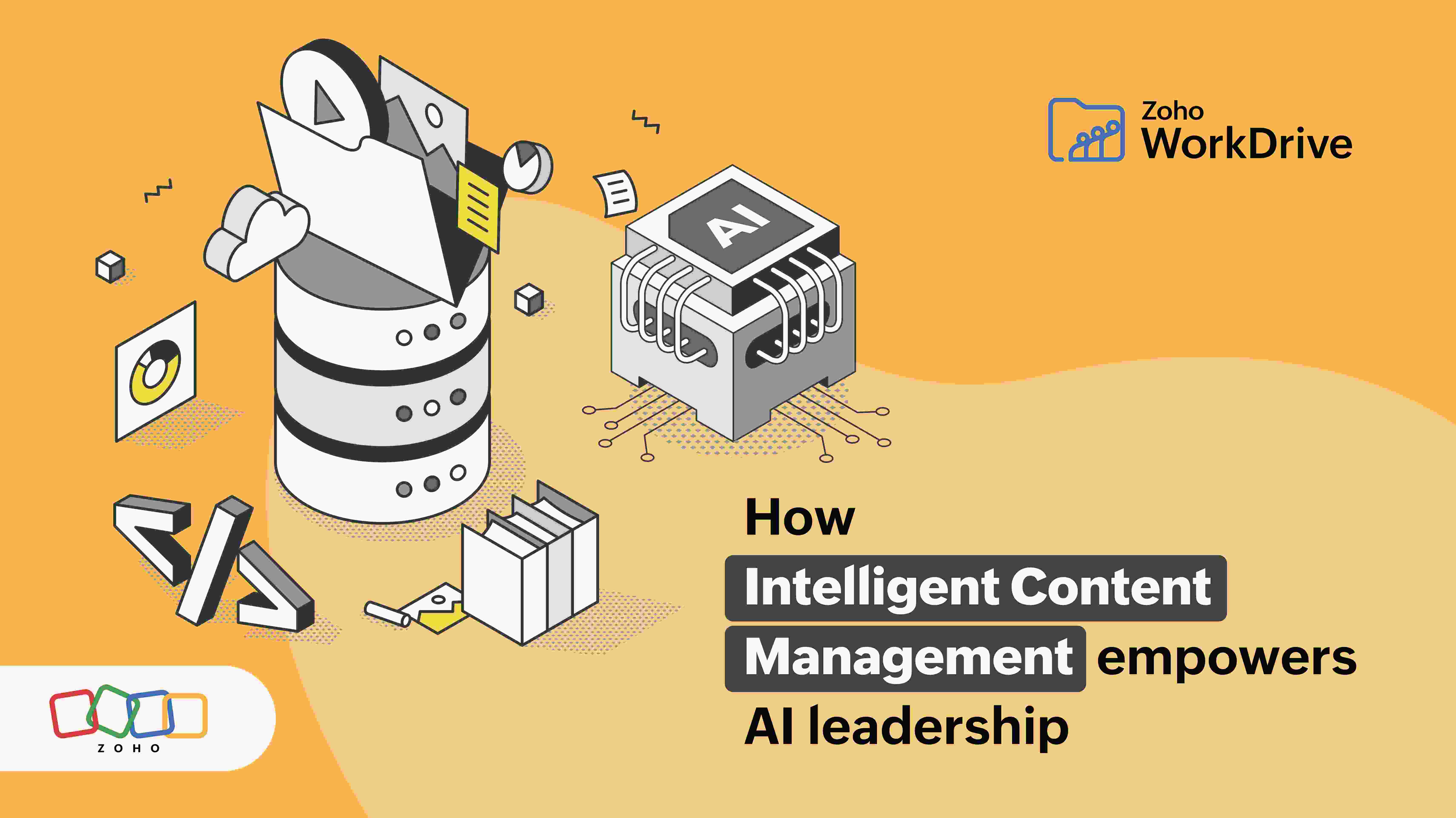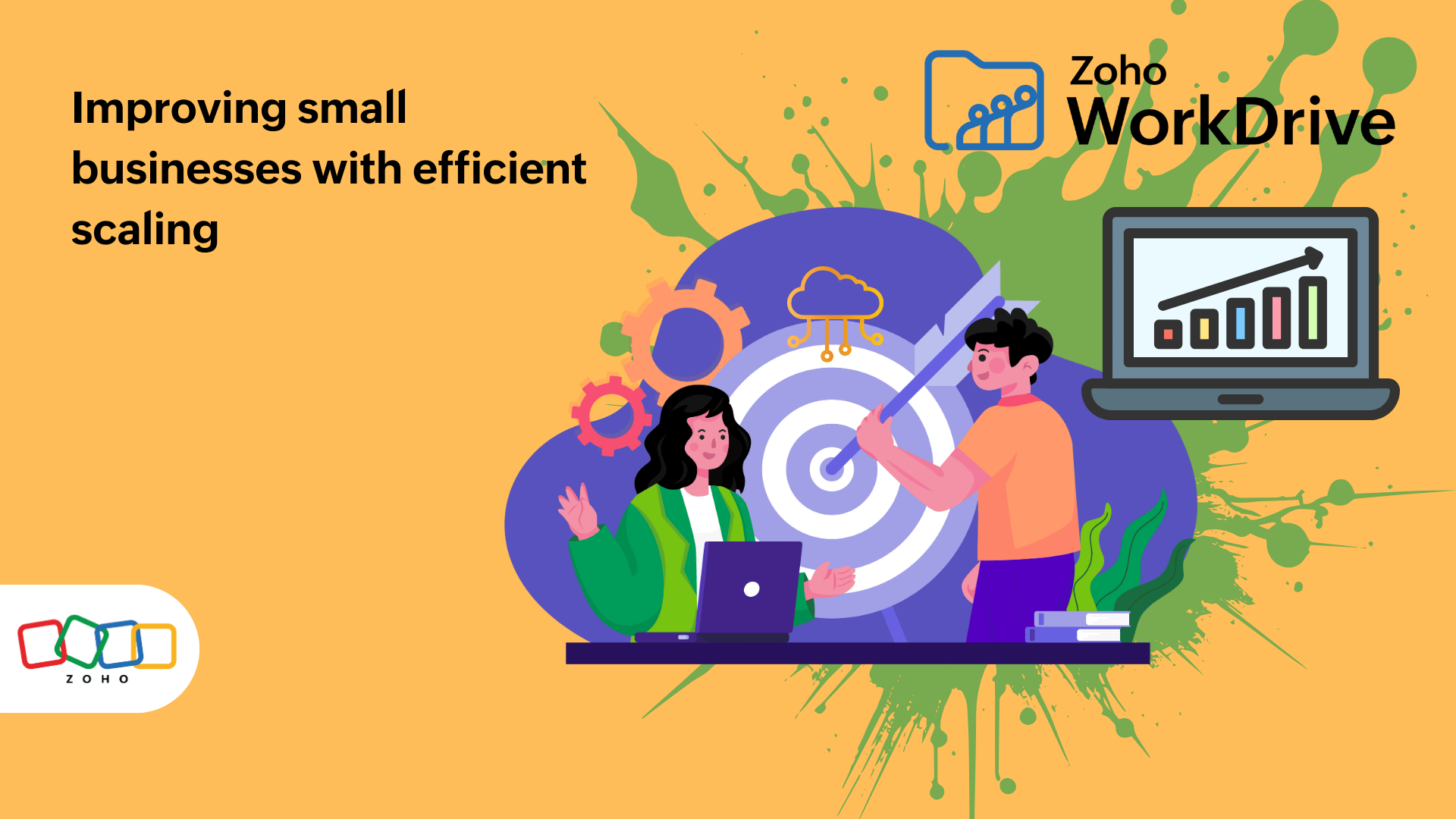- HOME
- Work Culture
- File management at federal agencies: Challenges and opportunities in the cloud
File management at federal agencies: Challenges and opportunities in the cloud
- Last Updated : November 2, 2023
- 569 Views
- 4 Min Read

Government agencies are responsible for managing vast quantities of files and data. Historically, this meant storing countless boxes and cabinets full of paper documents, but today technology provides faster and more functional digital solutions. This puts government bodies under constant pressure to digitize their records while also maintaining the safety, integrity, and availability of the data.
Today, various government officials ranging from diplomats to law enforcement must manage and share data across the federal departments using digital solutions. Finding the right file management tool can help government agencies streamline their operations with enhanced digital collaboration.

Given the scale and complexity of federal government information systems, this is easier said than done. Let's look at some of the toughest challenges faced by federal institutions when they evolve from legacy software and paper-based repositories to a modern file management solution.
1. Data security
Security is one of the most important factors in data management and dealing with classified information makes it a critical challenge. There's a prevailing idea that data centers where engineers can physically handle the servers are safer than the cloud, but the truth is quite the opposite. Cloud servers can provide multiple layers of security. In fact, governments today can implement a zero trust security model to better secure their files in the cloud.
2. Compliance
Data governance and ethics are key issues in government agencies' data management practices. This lays the foundation for people to trust federal agencies with their data. An example of this is the COVID-19 pandemic. With the emergence of a pandemic, governments focused on data collection to track the spread of the virus and guide policy decisions. However, privacy-related laws such as HIPAA and GDPR mandate that sensitive personal information must be handled in a protected manner. On a day-to-day basis, government agencies are also subject to strict record keeping and data retention requirements.
3. Data storage and organization
Government data is a double-edged sword. When used properly, it can result in better policies and more effective programs. However, managing data and providing secure access to authorized users is a challenge for governments. Modern file storage solutions come with intuitive features such as making searches simpler using AI and smart search. This saves time for the user and makes large volumes of data easier to access, use, and manage.
4. Collaboration and sharing
U.S. government agencies often need to collaborate and share files with other agencies, departments, and external stakeholders. Having a streamlined external file sharing process and being able to work in real-time with peers is essential—and traditional file management methods can't keep up. Cloud storage solutions with an option to collaborate in real-time help agencies stay secure and productive across different projects and initiatives.
5. Digital preservation
Historical and legal purposes demand that government agencies retain files for extensive periods. Maintaining the integrity of digital files over time poses a challenge because of evolving technologies and file formats. One approach is to have multiple formats for file preservation. Massive digital repositories like the Smithsonian Institute Archives follow preservation formats for various types of files to make the data accessible for long periods of time.
6. Version control and document tracking
When a single file goes through multiple departments—with many users accessing and making changes to it—tracking all the updates quickly becomes difficult. Extracting info from the right version is crucial to officials and policymakers. This brings version control and document tracking into focus. With an automated digital log of access and changes to each document, there's no need to dig through emails or struggle to find who made specific changes to it.
7. Legacy and paper-based files
Due to federal requirements, government agencies have a significant amount of paper-based files and data in legacy systems. Digitizing, organizing, and getting the information integrated into modern file management systems can be daunting. Administrators and IT teams fear it will be time-consuming and resource-intensive. AI has made digitization easier, but agencies must have the right file management provider to support integration of legacy files.
8. Budget constraints
Because their operations are funded by taxpayers, government agencies are always under pressure to use their budgets responsibly. Implementing a budget-friendly solution helps agency leadership and IT departments demonstrate fiscal accountability and make the most of their funding.
9. Access control and permissions
The ability to set access controls for individual users is critical for federal agencies with large repositories of important data. Administrators need to manage access and control permissions for different users based on their roles. For instance, a reviewer or an external collaborator from another federal department might be allowed only to make comments and not edit or remove a document. This facilitates collaboration while ensuring compliance and security are never compromised.
10. Disaster recovery and continuity
Government agencies need a robust backup and disaster recovery system to protect files from any natural disasters or system failures. Apart from this, having a reliable continuity plan ensures that critical tasks can be done even if they have to be carried out by different people in a new location.
The bottom line: Cloud solutions are the best path forward
For government and business organizations alike, there is growing urgency to implement a cloud-based file management system. This technology offers the powerful advantages of real-time collaboration, accountability, and cost-effectiveness—making it the ideal solution for federal agencies facing ever-increasing quantities of data, documents, and projects.


